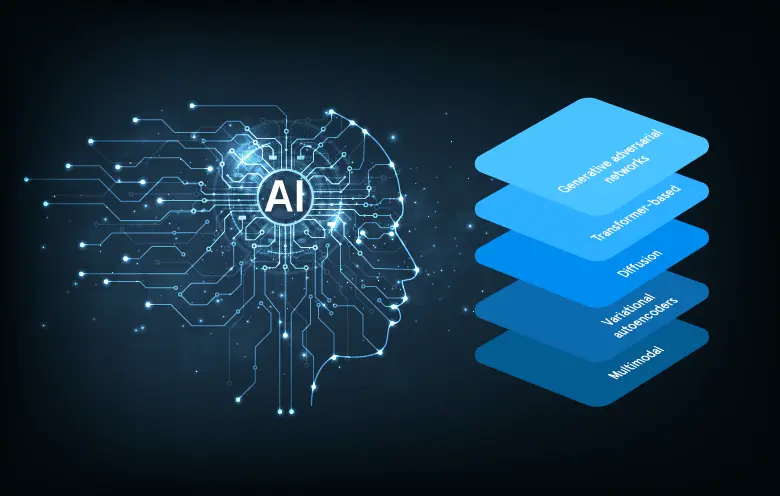
As the world of artificial intelligence continues to evolve, one of the most exciting areas of development is in AI reasoning models. These models are designed to emulate human-like thinking and decision-making processes, theoretically allowing machines to understand complex scenarios and make informed choices. This article explores the concept of thinking machines, the advancements in AI reasoning models, and their potential implications for various industries.
Understanding AI Reasoning Models
At the core of AI reasoning models is the ability to analyze information, draw conclusions, and solve problems. Traditional AI systems relied heavily on predefined rules and algorithms to process data. In contrast, modern reasoning models leverage techniques such as machine learning and deep learning to understand patterns and make predictions. These advancements have led to the development of thinking machines that can reason through data much like a human would.
The Evolution of Thinking Machines
The journey of thinking machines began with early AI models that focused primarily on simple tasks, such as data classification. With the introduction of more sophisticated algorithms and larger datasets, AI began to branch into more complex reasoning tasks. Today, these models can perform functions that require not only data processing but also contextual understanding and reasoning.
Recent breakthroughs in natural language processing (NLP) and computer vision have further accelerated the evolution of AI reasoning models. For example, models like OpenAI’s GPT-3 and Google's BERT are capable of understanding context, enabling them to engage in conversations, summarize texts, and even create content.
Key Advancements in AI Reasoning
Several key advancements have propelled the development of thinking machines:
- Neural Networks: The use of neural networks has allowed machines to mimic human brain functions, leading to more complex reasoning capabilities.
- Transfer Learning: This technique enables models to apply knowledge gained from one task to another, improving their adaptability and efficiency.
- Explainable AI: As reasoning models become more complex, explainable AI ensures that their decision-making processes are transparent and understandable to users.
These advancements contribute to the ability of thinking machines to handle ambiguous situations and make decisions based on partial information, a characteristic that has traditionally been a challenge for AI systems.
Applications of Thinking Machines
The practical applications of thinking machines span across various industries. Here are a few notable examples:
Healthcare
In healthcare, AI reasoning models can assist in diagnosing diseases by analyzing patient data and considering various symptoms. By simulating a doctor's reasoning process, these models can suggest treatment plans and predict patient outcomes, ultimately improving the quality of care.
Finance
In the financial sector, thinking machines are being used for fraud detection, risk assessment, and investment strategies. These models analyze vast amounts of transaction data to identify unusual patterns and make informed financial decisions.
Autonomous Vehicles
For autonomous vehicles, AI reasoning models enable cars to make real-time decisions based on their environment. By processing sensor data and predicting the actions of other drivers and pedestrians, these systems enhance safety and efficiency on the roads.
Challenges Facing AI Reasoning Models
Despite the progress in developing thinking machines, several challenges remain. One significant hurdle is ensuring that these models are free from bias. Since AI systems learn from historical data, they can inadvertently perpetuate existing biases present in that data. Addressing this issue is crucial to develop fair and reliable reasoning models.
Another challenge is the computational complexity of advanced reasoning models. As these systems grow more sophisticated, they require significant computational resources, which can be a barrier to widespread adoption. Researchers are actively exploring ways to optimize these models for efficiency without sacrificing performance.
The Future of Thinking Machines
As we look ahead, the future of thinking machines is promising. Continued research and development in this field are expected to lead to more robust reasoning models capable of tackling increasingly complex problems. The integration of ethical considerations into AI development will also play a pivotal role in shaping the future landscape of AI reasoning.
In summary, thinking machines represent a significant advancement in the realm of AI reasoning models. Their ability to reason, learn, and adapt has the potential to transform industries by improving decision-making processes and enhancing outcomes. As technology continues to advance, the possibilities for these intelligent systems are boundless.
Chart: Growth of AI Reasoning Models

This chart illustrates the growth trajectory of AI reasoning models over the past decade, highlighting significant milestones and advancements. As the field continues to evolve, we can expect even more groundbreaking developments in the years to come.









